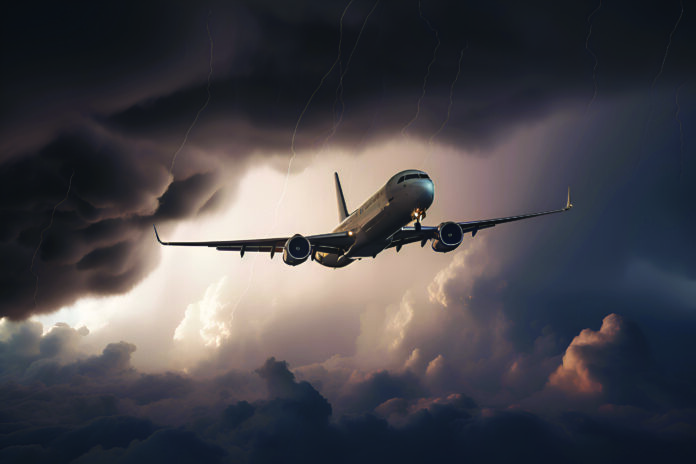SOURCE: nytimes.com (edited)
Countless travelers have experienced the distinct anxiety-inducing sensation of turbulence on flights: Eyes squeezed shut, hands clamped to the armrests for dear life, bracing for the roller coaster to come. It can be intense and can cause injuries during flights.
Recent reports of injury causing turbulence raise questions about whether turbulence is getting more frequent and intense. A group of experts was gathered to learn more about the tricky-to-predict weather phenomenon. Here’s what they said.
What is turbulence?
Turbulence is unstable air movement that is caused by changes in wind speed and direction, such as jet streams, thunderstorms, and cold or warm weather fronts. It can range in severity, causing minor to dramatic changes in altitude and air speed.
It’s not just associated with stormy weather either, but can also occur when skies appear clear and placid. Turbulence can be invisible to both the eye and weather radar.
There are four classifications for turbulence: light, moderate, severe and extreme. In cases of extreme turbulence, pilots can lose control of the airplane and there can even be structural damage to the aircraft, according to the National Weather Service.
Is turbulence increasing?
Recent research indicates that turbulence is increasing, particularly clear air turbulence, which occurs most frequently at high altitudes and in winter. Clear air turbulence is increasing around the world at all flight altitudes and is one of the more challenging things to predict.
Using forecasts, in addition to guidance from air traffic controllers, pilots attempt to skirt turbulent areas by adjusting their altitude to find the smoothest ride. This means flying higher or lower than the altitude where forecasters predict turbulence.
How to stay safe in turbulence?
Airplanes are designed to withstand rough conditions and it is rare for aircraft to incur structural damage because of turbulence. But turbulence can toss passengers and crew members around, potentially causing grave injuries like bone fractures and hemorrhages.
In severe turbulence, the vertical motion of the plane will exceed gravity’s pull. What that means is that if you’re not seat belted, by definition, you will become a projectile, lifting up and out of your seat.
Multiple experts emphasize that staying seated and keeping your seatbelt on as much as possible during flights are the best ways to reduce risks. According to experts, if you stay fastened you’re far less likely to incur an injury.
What about babies on laps?
Children younger than 2 years old are allowed to be carried on an adult’s lap during flights, but many industry experts, citing dangers such as turbulence, believe this practice should be prohibited.
For decades, the Association of Flight Attendants-CWA, a union representing about 50,000 flight attendants across 19 airlines, has argued that every passenger have their own seat, no matter their age. The union’s president said in an interview that with turbulence becoming “much more common” lately, the need for young children to be properly secured in child safety seats during flights is a greater priority. Unexpected turbulence is the leading cause of pediatric injuries on airplanes.
“We are talking about events in the cabin that are potentially deadly but survivable when you do the right things to protect yourself,” the Union’s president said.


